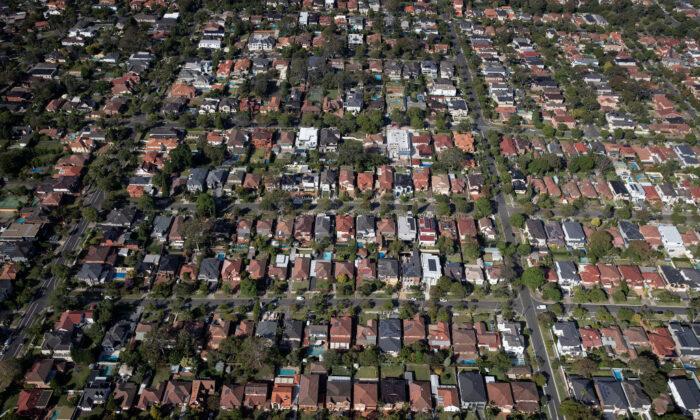The New South Wales (NSW) government will force councils to allow the construction of terraces, townhouses, and two-storey apartment blocks in suburbs where they are currently banned.
The change enables building homes near transportation, infrastructure, and social amenities to address the state’s housing shortage crisis.
It will create capacity for 112,000 homes out of the required 377,000 across Greater Sydney, Hunter, Central Coast, and Illawarra by 2029.
Planning Minister Paul Scully said Sydney is among the world’s least dense cities, yet fewer than half of the councils permit low- and mid-rise residential buildings in areas suitable for such homes.
He said allowing the townhouses, apartments, and terraces in areas with shops, high streets, and parks is “density done well.”
“It also saves essential workers from having to travel long distances to get to centrally located places of work, like hospitals and schools,” he said.
Further, he said it would encourage people to stay in their communities and neighbourhoods, with family and friends able to live nearby.
“More housing choice means more options for everyone—renters, families, empty nesters,” he added.
He said choice in housing grew suburbs like Wollstonecraft, Waverton, Erskineville, parts of Wollongong, and Newcastle.
“They’re great places to live. We just need more of them,” he said.
To make the changes, the government will adjust the state’s planning policy and urge councils to include diverse housing types in their rules.
If a council’s rules match the new NSW government policy, the state changes won’t apply to them.
The government previously wrote to councils, asking them to review their policies to allow for more housing in low-density and medium-density zones across their local area.
However, Hills Shire Mayor Peter Gangemi said the changes would significantly increase densities within the Hills Shire.
“These were densities that were never envisaged when the roads were designed when we allocated the amount of sports fields and passive space for those areas,” he told ABC News.
NSW HIA Emphasises Need for Consistency in Planning Changes
Meanwhile, the NSW Housing Industry Association (HIA) welcomed the council override but said the planning changes must be consistent across all local government areas.“This will ensure the approval process is streamlined, minimising delays and reducing costs for the families who can take advantage of the option to knock down their old home on a large block and replace it with two dwellings,” he said.
However, Opposition Leader Mark Speakman argued the government is making changes without consulting councils.
“The government just arrogantly has a one-size-fits-all policy,” he said.
“We accept there has to be increased density. But in the first instance, you should try and bring local communities along.”

Government Takes Action on Density Gap
The changes come after the state government found a significant gap in density approval, with only two out of 32 (6 percent) Local Environmental Plans (LEPs) allowing terraces and one- to two-storey unit blocks.Additionally, 60 percent of appropriate multi-dwelling zones across Sydney prohibit residential flat buildings of any scale.
Therefore, low-rise density has been ignored for 12 years in the face of a growing housing crisis, the government said.
Meanwhile, addressing low-rise density is better for the environment and costs the taxpayer less.
The NSW Productivity Commission noted a double to quadruple cost to keep building outward compared to infill development, where underused or vacant land in urban areas are developed.
NSW Productivity Commissioner Peter Achterstraat weighed in.
“Growing through [urban] sprawl has been very costly. If we continue that way, then ultimately, existing and future residents will have to pick up the bill through higher taxes or public debt,” he said.
He said infill development will reduce unnecessary costs while allowing Sydneysiders to live where they want.
He added that now was the right time for the change, as NSW residents face significant cost-of-living pressures and increased housing costs.
Urgent Need to Build More Homes Every Year, Says Official
Sydney’s median property price is over 13.3 times the median income, up from 8.3 a decade ago.The hefty price tag has dragged Sydney down in livability, threatening its competitiveness and stance as a fair and equitable city.
At the same time, NSW needs to house 85,000 people annually for the next 20 years, totalling 904,000 homes or 45,200 per year.
Committee for Sydney Chief Executive Eamon Waterford said housing availability was crucial.
“If Sydney can’t be a city where teachers, nurses, cleaners, and hospitality workers can afford to live, the reality is we will hollow this city out, and it won’t function very well,” Mr. Waterford said.
“We’ve got to build many houses, more than we’ve ever built in this city in any year but every single year for the foreseeable future,” he said.








